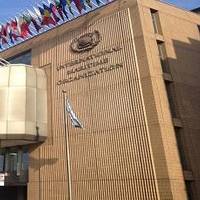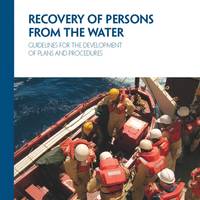
IMO
There are numerous organizations with the abbreviation "IMO," but assuming you are referring to the International Maritime Organization (IMO), here's a detailed overview:
International Maritime Organization (IMO)
The International Maritime Organization, often abbreviated as IMO, is a specialized agency of the United Nations responsible for regulating shipping. The IMO was established in 1948 and came into full force in 1959. Its headquarters are located in London, United Kingdom.
Mission and Objectives
The IMO's primary mission is to create a regulatory framework for the shipping industry that is fair, effective, universally adopted, and universally implemented. The organization focuses on several key objectives:
- Safety and Security: Establishing international safety regulations to ensure the security of life at sea.
- Environmental Protection: Setting standards to minimize the environmental impact of shipping activities.
- Legal Matters: Developing international maritime law to ensure efficient and equitable shipping practices.
- Technical Cooperation: Providing technical assistance and capacity-building programs, especially for developing countries.
- Efficiency and Facilitation: Streamlining procedures for international shipping to make maritime transport more efficient and cost-effective.
Key Conventions and Regulations
The IMO is known for several important international treaties and conventions, such as:
- SOLAS (Safety of Life at Sea): One of the most important treaties focusing on ship safety.
- MARPOL (Marine Pollution): International regulations aimed at preventing pollution from ships.
- COLREGs (Collision Regulations): Regulations for preventing collisions at sea.
- STCW (Standards of Training, Certification, and Watchkeeping for Seafarers): Setting qualification standards for seafarers.
- IMDG Code (International Maritime Dangerous Goods Code): Regulations for the safe transport of hazardous materials and dangerous goods.
Structure and Governance
The IMO consists of an Assembly, a Council, and five main Committees:
- Assembly: The highest governing body, composed of all Member States, which meets every two years.
- Council: Acts as the executive organ and is responsible for ensuring the functioning of the IMO.
- Committees:
- Maritime Safety Committee (MSC)
- Marine Environment Protection Committee (MEPC)
- Legal Committee
- Technical Cooperation Committee
- Facilitation Committee
Membership
The IMO has a wide membership, with around 174 Member States and three Associate Members as of 2023. These members are primarily countries with maritime interests.
Achievements and Impact
The IMO has made significant contributions to maritime safety and environmental protection:
- Reduction in Maritime Accidents: Implementation of rigorous safety standards has led to a marked decrease in maritime accidents.
- Mitigating Environmental Impact: Introduction of cleaner fuel regulations and restrictions on emissions has reduced the environmental impact of the maritime industry.
- Global Standards: The establishment of universally recognized standards has leveled the playing field, fostering fair competition and consistency across the global maritime industry.
If you meant another organization by "IMO company," please provide more context, and I’d be happy to share information accordingly.
- Phone: + 44 (0)20 7735 7611
- Web: https://www.imo.org/
IMO News
IMO Type Approval for BallastMaster ultraV 500

GEA Westfalia Separator Group was awarded IMO Type Approval by the Federal Maritime and Hydrographic Agency (BSH) for the BallastMaster ultraV 500. The document was handed over by representatives of the BSH in an official capacity to the project managers of the ballast water system at SMM 2014 in Hamburg. The 500m³ installation is a scale-up of the 250m³ variant which had already been certified with the IMO Type Approval in December 2011.
Denmark Nominates Nordseth for IMO Sec. Gen.'s Post
Denmark nominates Director General of the Danish Maritime Authority Andreas Nordseth for the post as Secretary General of United Nations’ International Maritime Organization (IMO).
Interferry Applauds IMO Consideration of BWTS Exemption

Interferry has praised a decision made at last week’s meeting of the IMO Marine Environment Protection Committee (MEPC) that could exempt certain ferry operators from fitting equipment required by the impending Ballast Water Management Convention to reduce the spread of invasive species. In a joint submission with Denmark, the trade association argued that ballast water management systems were irrelevant for ships continuously operating in the same body of water, such as between the U.K.
INTERTANKO Welcomes IMO Bunker Decision
The International Maritime Organization (IMO) has agreed to consider introducing measures to improve controls of bunkers delivered to ships. After six submissions to the IMO over four years…
IMO to Review BWM System Type Approval Guidelines
As proposed by INTERTANKO and its industry partners, the IMO has agreed to commence a review of the ballast water management system (BWMS) type approval guidelines…
ICS Welcomes IMO Progress on BW Issues

Governments attending the International Maritime Organization (IMO) Marine Environment Protection Committee (MEPC) this week have made real progress towards agreeing solutions to major issues that have previously impeded ratification of the IMO Ballast Water Management Convention, says the International Chamber of Shipping (ICS), the global trade association for ship operators. Speaking at IMO headquarters…
Denmark Lobbies for IMO Top Job
Denmark and its maritime industry are lobbying to get the top position at the International Maritime Organization, a United Nations body that wields great influence…
IMO Urged to Provide Access to Efficiency Data

Shipping Fuel Transparency Will Lower Emissions and Cut Costs. NGOs call on shipping industry regulator to drive down costs, trigger improved fuel efficiency and reduce ship GHG emissions through efficiency data transparency. Transport & Environment, Seas at Risk and Carbon War Room are urging the International Maritime Organisation (IMO) not to withhold data on ship efficiency and fuel consumption.
ICS Lobbies on BWT Issues on Eve of IMO Meeting
The International Chamber of Shipping (ICS) and its member national shipowners’ associations are engaged in a flurry of lobbying on the eve of a crucial meeting…
IMO Takes Step Towards Electronic Certificates

In the future, the IMO member States should accept the use of electronic certificates. This is the request of the Facilitation Committee (FAL) and, hence, the road is paved for less paperwork, nuisance and delays for the shipping industry. In the future, it must be easier to use electronic certificates. This was decided by the Facilitation Committee of United Nations’ International Maritime Organization…
IMO Takes Important Step Towards Electronic Certificates
In the future, the IMO member States should accept the use of electronic certificates. This is the request of the Facilitation Committee (FAL) and, hence, the road is paved for less paperwork…
Ship Safety: IMO Committee Agree Draft IGF Code
IMO informs that the draft International Code of Safety for Ships using Gases or other Low flashpoint Fuels (IGF Code), along with proposed amendments to make the Code mandatory under SOLAS…
ICS to Plead Shipowners' Eco-Concerns to IMO Member States
In advance of a critical intergovernmental meeting next month at the UN International Maritime Organization (IMO), the International Chamber of Shipping (ICS) has…
MTU Shows SMM it's Ready for IMO Tier lll
The Rolls-Royce brand MTU is showing its concepts at the current SMM, Hamburg, in response to the IMO Tier III emission standard which is due to come into force in 2016.
MTU, Fairplay to Test Diesel Genset with SCR for IMO Tier III

The Rolls-Royce brand MTU and Fairplay Towage are to test an MTU diesel genset with SCR exhaust aftertreatment in a harbor tug in order to verify compliance with IMO Tier III emission requirements that come into force as of 2016. The nitrogen oxide (NOx) emissions will be cut by 90% compared with the IMO Tier I regulation that was introduced in 2000. “This is one of the world’s first tests of high…
IMO Joins International Ebola Task Force
The International Maritime Organization (IMO) informs it has joined the international ad hoc Ebola Travel and Transport Task Force and is working with other United…
RayClean BWTS is IMO and DNV Type Approved
Ballast water treatment system RayClean, developed by DESMI Ocean Guard, has received IMO and DNV type approval. On September 5, 2014 DNV GL issued type approval certificate for the RayClean system.
IMO Joins International Ebola Task Force
The International Maritime Organization (IMO) has joined the international ad hoc Ebola Travel and Transport Task Force and is working with other United Nations…
Danelec DM100 VDR Type Approved to New IMO Standard
Danelec Marine A/S announced introduction of their new-generation DM100 VDR, the first VDR on the market to be type-approved and Wheelmarked under the new IMO standard.
ICS Produces Guidelines for IMO Regulation

Guidelines helping shipowners comply with a new International Maritime Organization (IMO) regulation, requiring ship-specific planned procedure for recovering individuals from the water, have been launched by the International Chamber of Shipping (ICS). Under the new SOLAS Regulation, effective July 1, all ships are required to develop plans and procedures that identify the equipment used for recovery…




